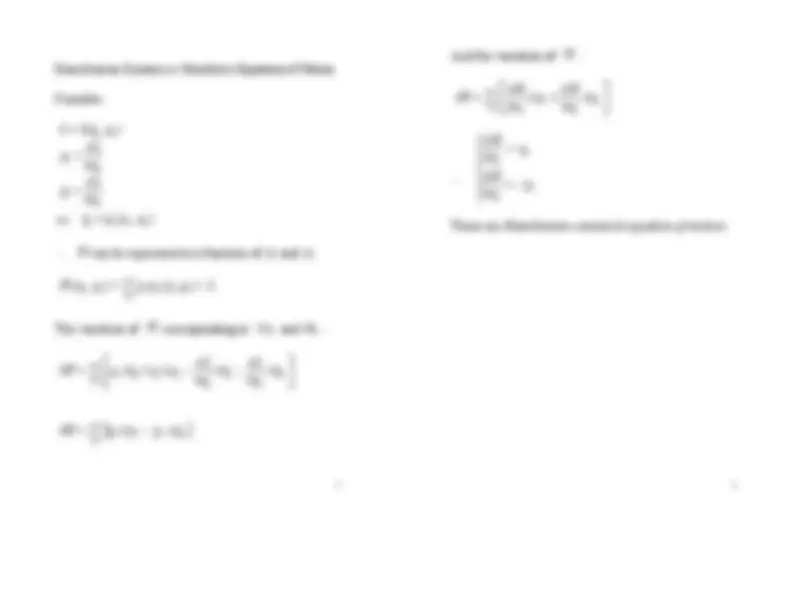



Study with the several resources on Docsity

Earn points by helping other students or get them with a premium plan


Prepare for your exams
Study with the several resources on Docsity

Earn points to download
Earn points by helping other students or get them with a premium plan
Community
Ask the community for help and clear up your study doubts
Discover the best universities in your country according to Docsity users
Free resources
Download our free guides on studying techniques, anxiety management strategies, and thesis advice from Docsity tutors
If the Lagrangian remains invariant under rotation about an axis, then the angular momentum of the system about this axis will remain constant in time.
Typology: Study notes
1 / 3

This page cannot be seen from the preview
Don't miss anything!


1
Any closed system has:
-^
-^
-^
-^
const L q
qm
p
k k
k^
-^
If the Lagrangian of a system, closed orotherwise, is invariant with respect to atranslation in a certain direction, then thelinear momentum of the system in thatdirection is constant in time.
-^
r q
p p
const p r J k k
3
-^
o L^ ∂=t∂
k
k k
k
k^
k^
qd dt L q
dqdt L q
Ld td
k k^
q qd (^) dt
k
k^
L q
L q d dt
k
k k
k
k^
k
q L q
q L q d td
Ld td
k Lqqk
d td
Ld td
k k^
L q q d dt
const L q p
L q q
k
k k
k^
k k^
k qpk
H H
n
Hamiltonia the
called is
-^
const E V T V T T L T